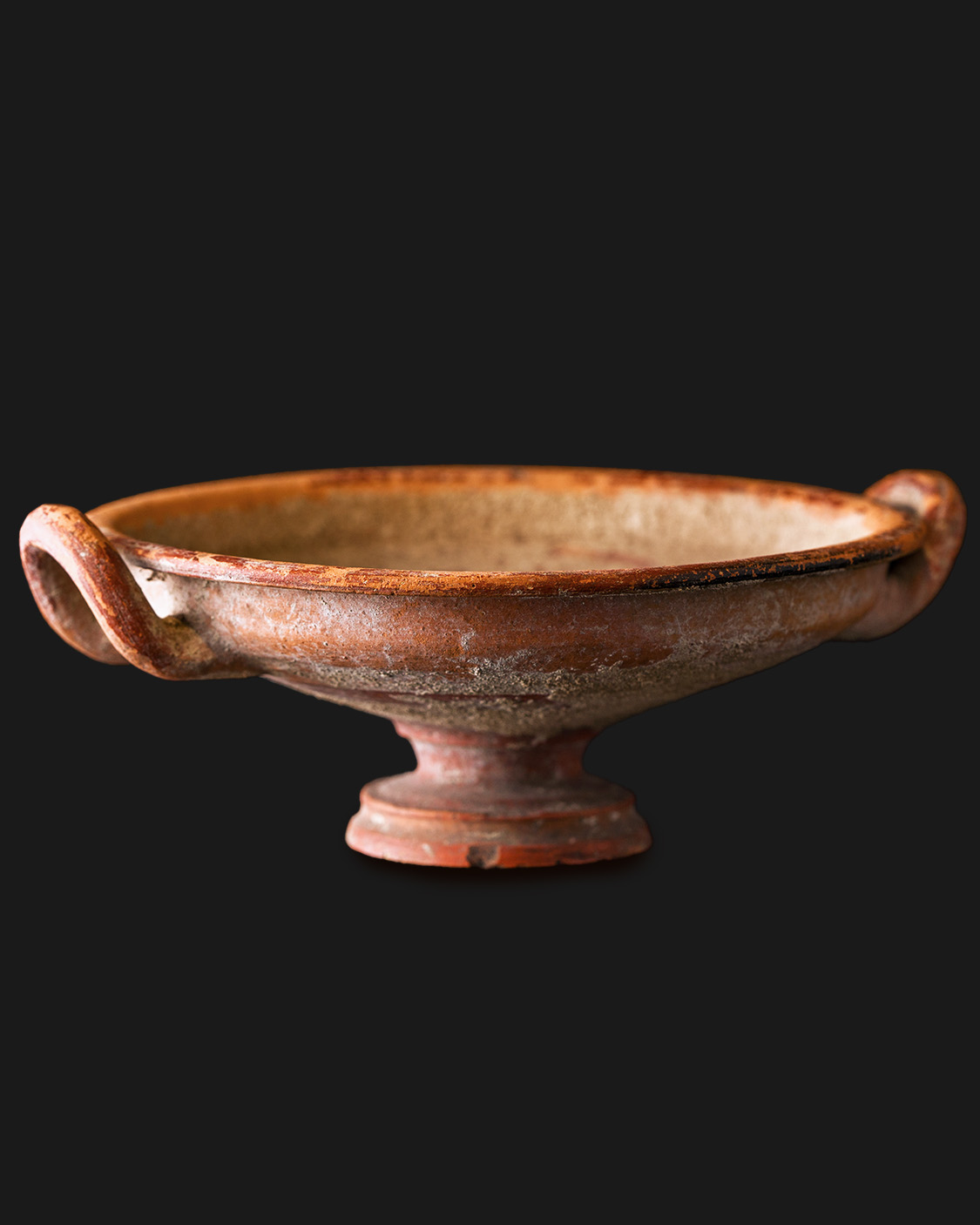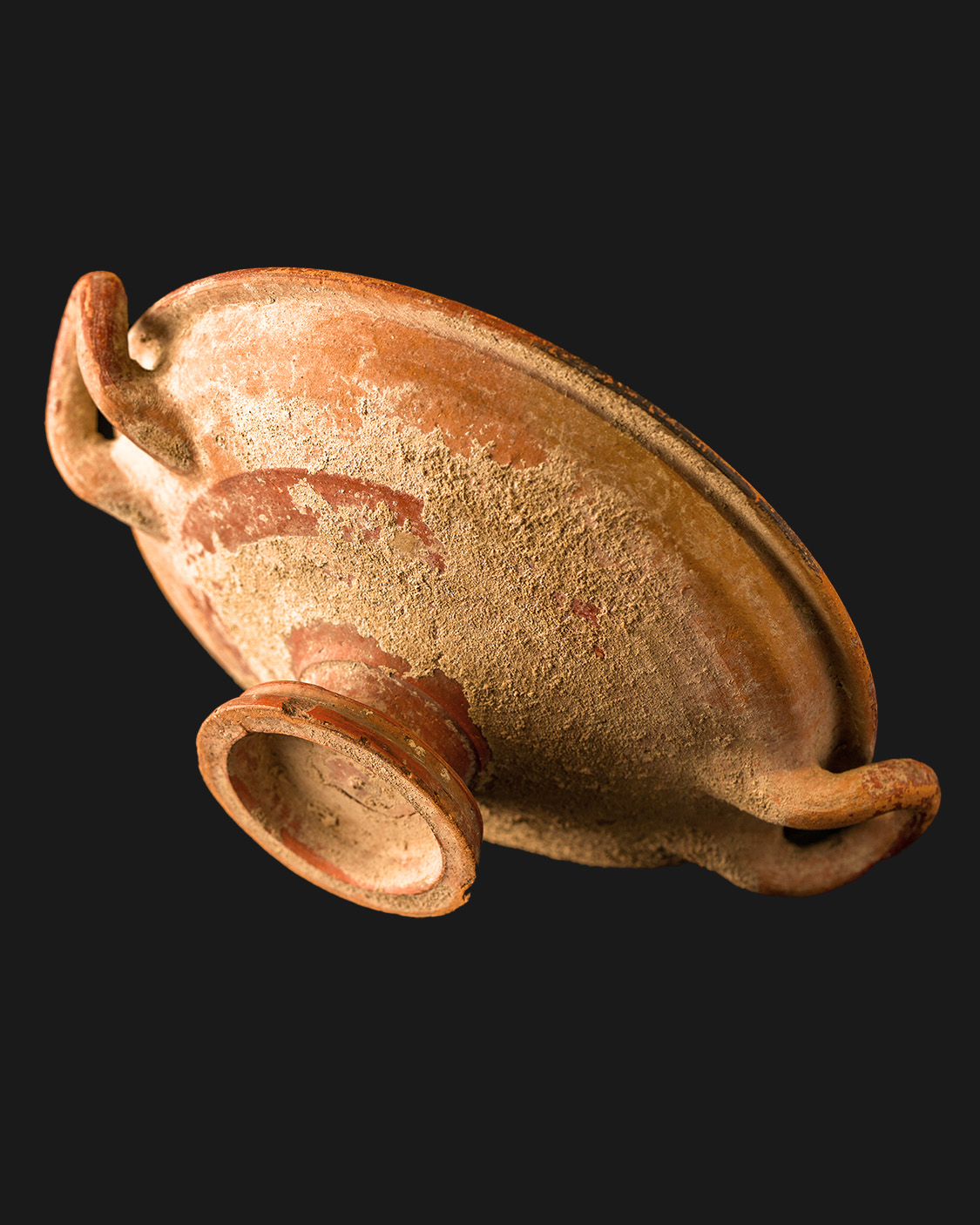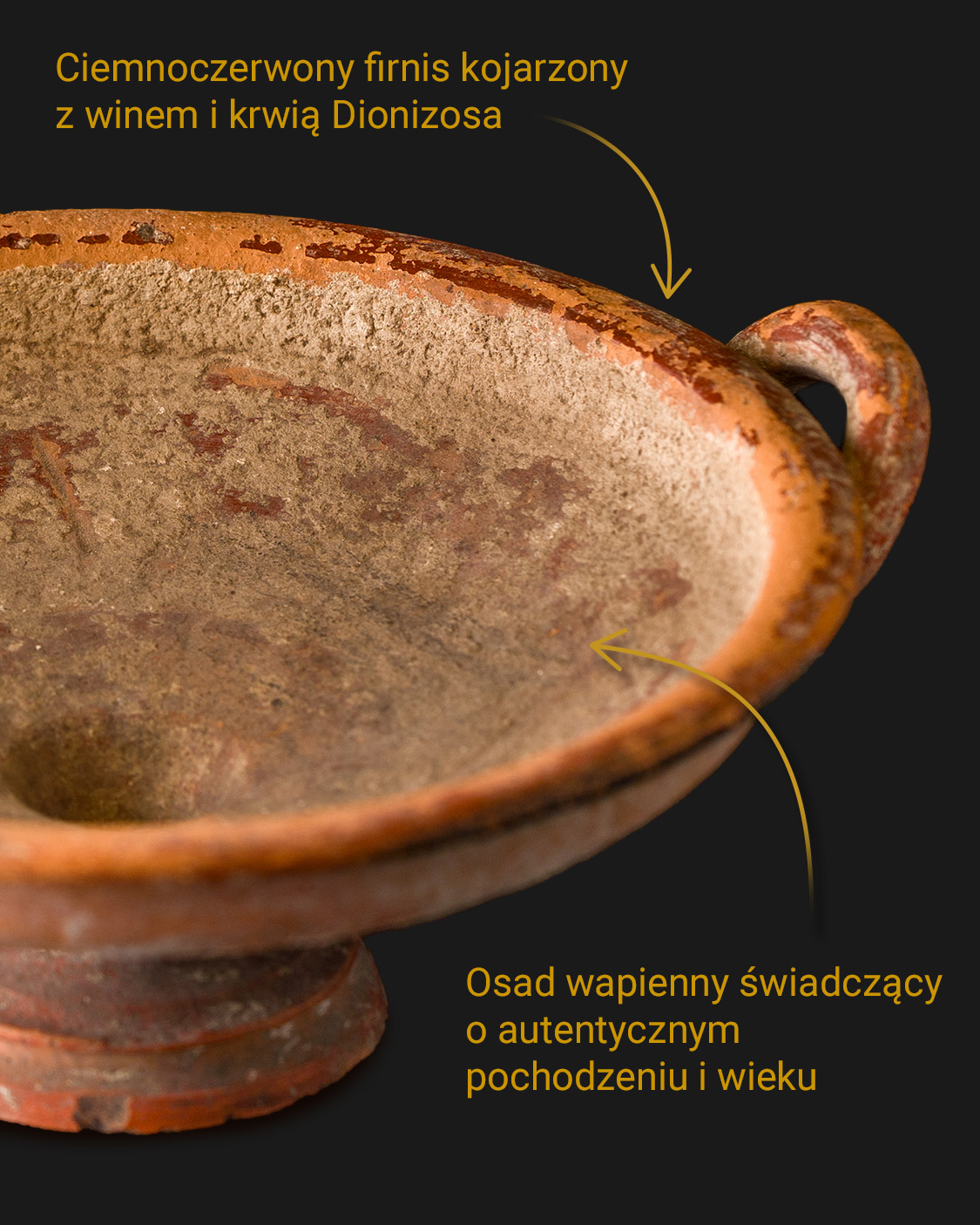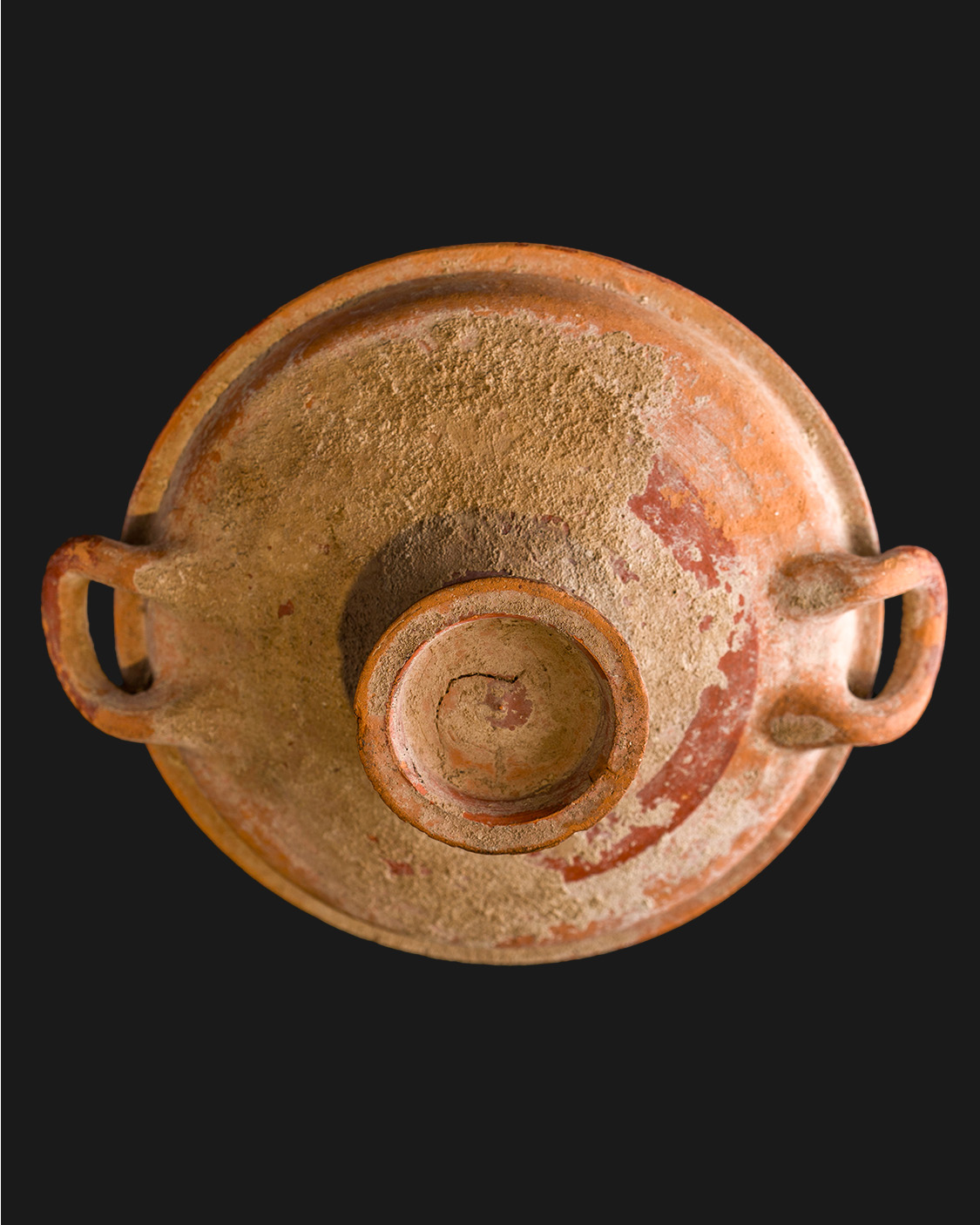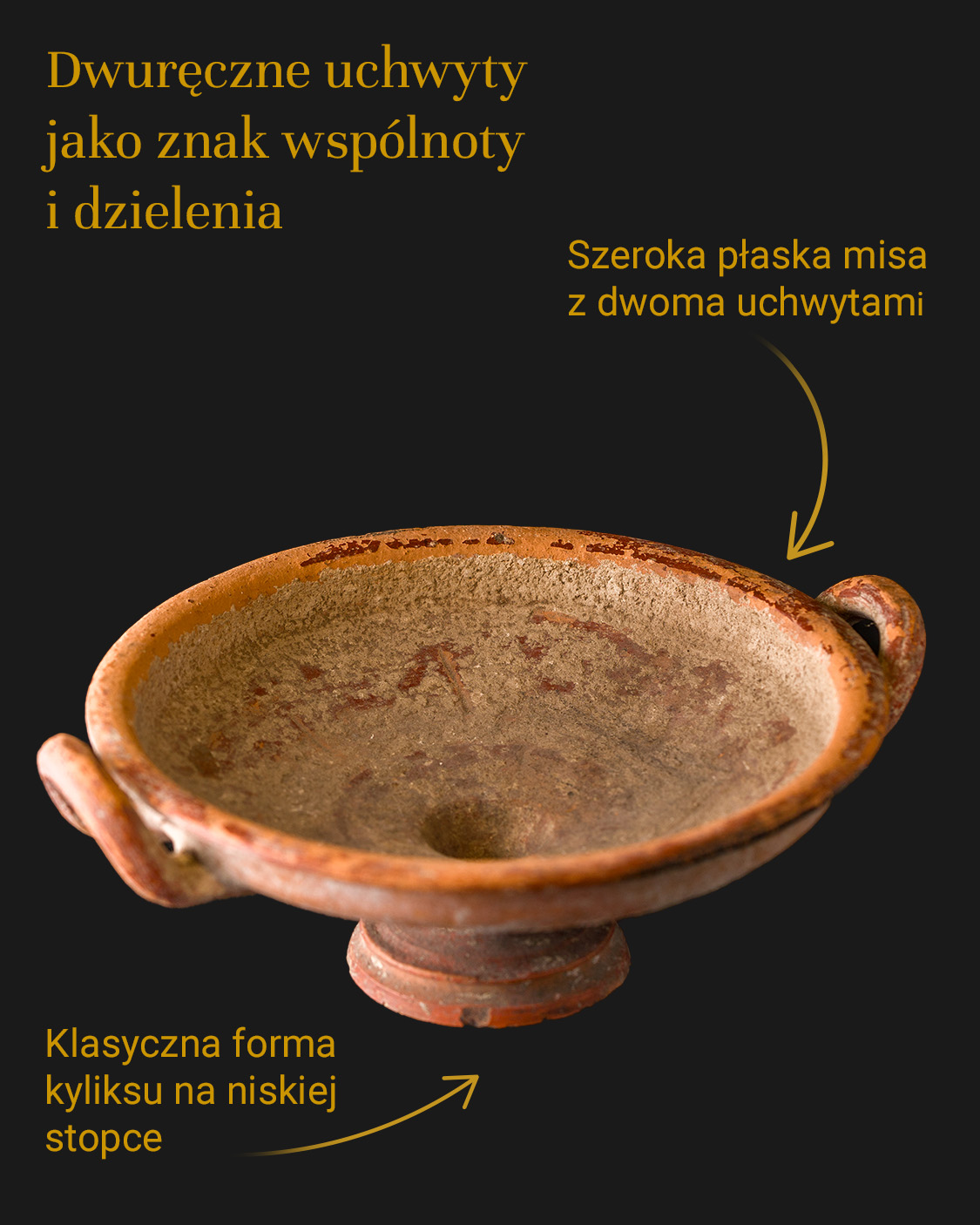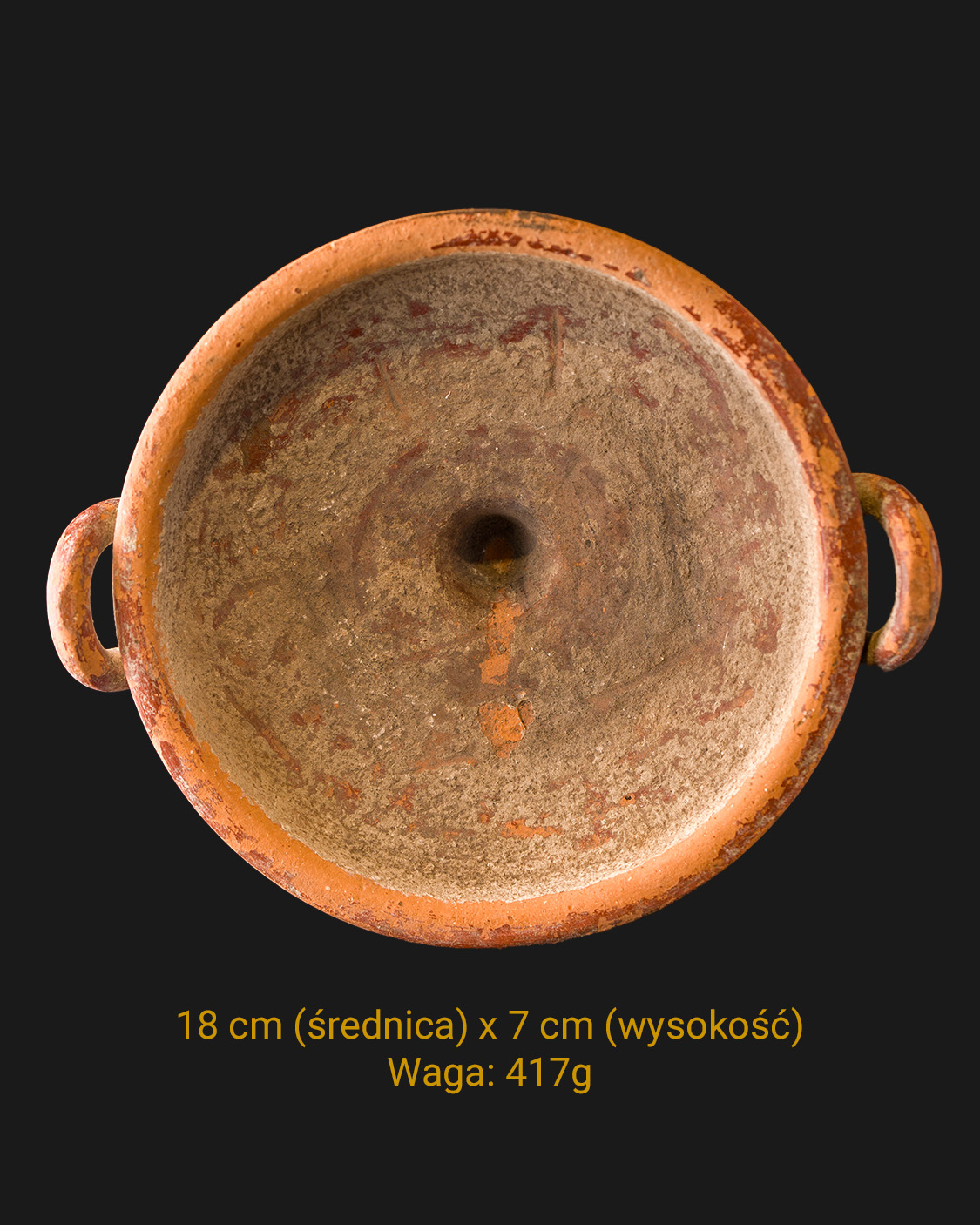






Ancient Greece, wine vessel, kylix, circa mid-4th century BC.
200,00 €
Greek kylix most likely made in Apulia, dated to around the mid-4th century B.C. Classical example of utility ceramics – A chalice used for drinking wine. The vessel is preserved in very good condition, with no cracks or structural defects, with visible signs of age, loss of the firn layer and lime deposit inside. Found in the south of France.
Out of stock
Greek Kyliks
Form kylix symbolized the feasting community. The two-handed vessel was used to ritually serve and drink wine during the greek symposiums meetings, which were dominated by conversation, singing and shared reflection. Kyliks embodied the unity of the participants, equal access to liquor and the aesthetic experience resulting from its form and decoration.



Historical context
Kylixes were a popular feature of Greek symposiums - meetings of elites, philosophers and artists where wine was drunk, conversation and games were held. Apulia, as part of the so-called Magna Graecia, was an important center of ceramic production in southern Italy, taking Hellenistic patterns and combining them with local style.
Collector's value
An object attractive to collectors of Greek antiquities and institutions concerned with the history of everyday life of ancient civilizations. A well-preserved specimen of a utilitarian vessel with clear stylistic features, typical of southern Italian production. An ideal addition to the collection of ancient Greek ceramics
Aesthetic qualities
The simple, harmonious form, functional design and traces of the original firnis create an authentic image of an ancient utility vessel. Natural sediment and patina add to its authenticity and noble old age.
Application
It can be displayed in a museum, private collection, library or antique styled interiors. It can serve a decorative function or be an inspiration for designing contemporary ceramics. It is also suitable as a bowl for trinkets, a candle or a fragrance composition.

How did the ancient Greeks drink wine?
Wine in ancient Greece was not drunk in its pure form, it was diluted with water In special proportions to avoid intoxication and keep the mind sober. Pure wine was drunk only in religious contexts or by barbarians.
During the symposiarchy it is master of the feast (symposiarch) decided how much wine and at what rate the participants would drink. Kyliks, such as this specimen from Apulia, was not only a utilitarian vessel, but also part of a ritual. Held with both hands, it symbolized community and balance, and its flat bowl often exposed the paintings when the wine ran out.
This original antique kylix from the 4th century BC. is an excellent example of of the functional ceramics of Classical Greece, inextricably linked to the culture of wine drinking as a form of art, philosophy and social life.

| Weight | 417 kg |
|---|---|
| Dimensions | 18 × 7 cm |
| Type |
Antique utility vessel |
| Form |
Flat china with two horizontal handles, on a low foot |
| Materiał |
Clay (terracotta) ,Firnis remnants |
| Kolorystyka |
Brick ,Brown ,Orange ,Terracotta |
| Technika |
Layer of dark red firnis ,Pottery wheel |
| Czas powstania |
4th century B.C. |
| Era |
Classical period |
| Kraj pochodzenia |
Italy ,Probably Puglia |
| Style |
Apulian ceramics ,utilitarian style ,classic |
| Autor |
Unknown |
| State of preservation |
Well-preserved specimen without cracks, with loss of firnis, lime deposit and local soiling |

